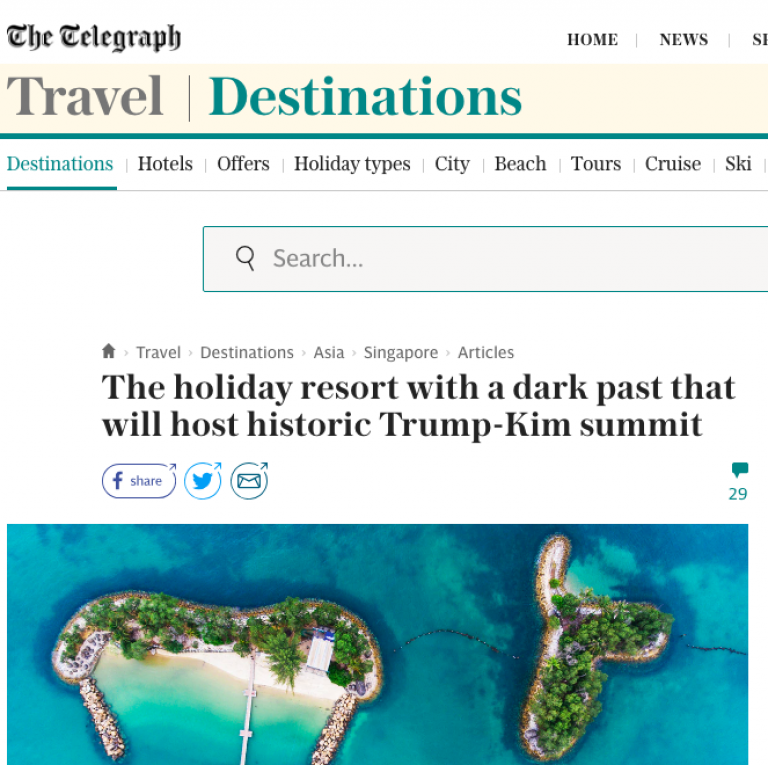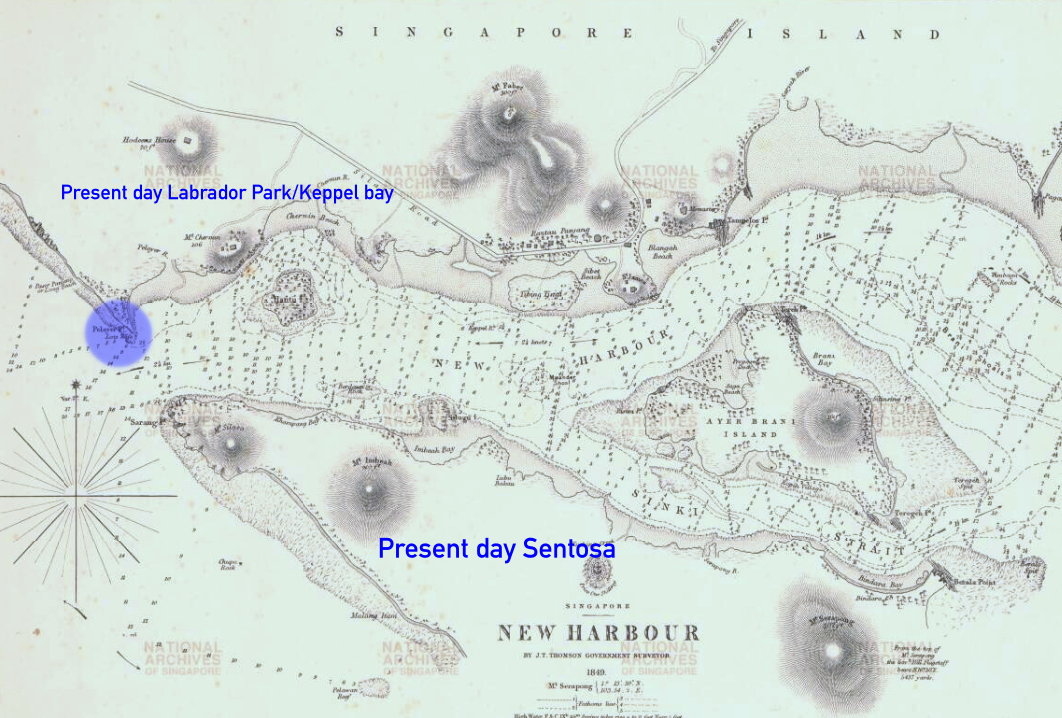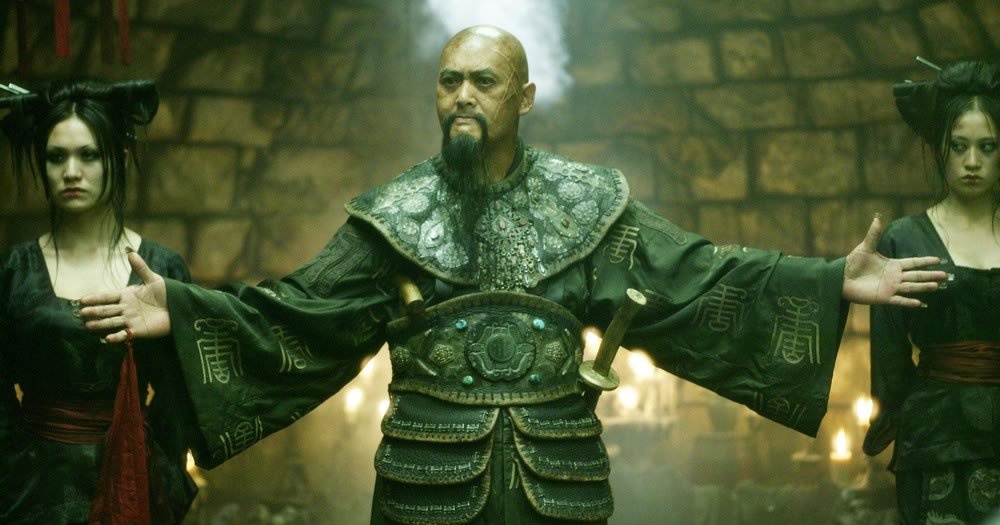In the lead up to the June 12 Trump-Kim peace summit that will be held at Sentosa's Capella hotel, media outlets are scrambling to dig up what they can on the "State of Fun", including its not-so-fun if downright grim history.
The Telegraph called it the "holiday resort with a dark past":

Fox News went with "secluded island with pirate ties":
 Screenshot via Fox News article
Screenshot via Fox News article
... while according to Bloomberg, Sentosa is a "pirate hangout":
 Screenshot via Bloomberg article
Screenshot via Bloomberg article
Are all these deluded Western-centric stories by ill-informed angmoh writers?
Actually, there is some historical truth to these claims.
[related_story]
So who were these pirates?
The piracy in our waters was first documented by a Chinese trader called Wang Dayuan in the 14th century.
He observed that there was a particular waterway called the Dragon Tooth Gate (龙牙门) which was particularly dangerous to sailors:
 1851 hydrographic chart showing the New Harbour, which was previously Dragon Tooth Gate. The rocky outcrop which gives Dragon Tooth Gate its name is highlighted in blue. Via NAS.
1851 hydrographic chart showing the New Harbour, which was previously Dragon Tooth Gate. The rocky outcrop which gives Dragon Tooth Gate its name is highlighted in blue. Via NAS.
Dragon Tooth Gate was named after a rocky outcrop which resembled a fang, albeit an oversized one:
 Unfortunately, this rather unique rock formation was blasted to smithereens when the British was constructing the New Harbour. It's called Batu Berlayer or Lot's Wife. Image via NAS.
Unfortunately, this rather unique rock formation was blasted to smithereens when the British was constructing the New Harbour. It's called Batu Berlayer or Lot's Wife. Image via NAS.
The area, which is presumed to be between Labrador Park and Sentosa Island, was home to a group of indigenous people who, according to Wang, pillaged and plundered as their favourite pastime.
These people also warned Wang to beware of other pirates who attacked with blowguns and slaughtered their victims.
The pirates would wait until ships were on their return journeys (hence carrying stuff worth looting) before ambushing the vessels with a few hundred perahu (small boats). These boats were usually armed.
Victims who were lucky enough to catch a wind within the waterway could escape. The not so lucky ones were slaughtered after they were robbed.
It's possible that some of these "pirates" were actually sea nomads or orang laut, the indigenous people who collected sea products and traded with land settlements. They also served in the courts of early Malay rulers.
When the British arrived in 1819, their research told them that "for a period of about five hundred years and a half, there is no record of Singapore having been occupied, and it was only the occasional resort of pirates".
The British also found skulls and skeletons, presumably of pirate victims, littered on our beaches. These were later cleared as instructed by William Farquhar.
As Singapore grew in status as a bustling trading port, piracy in the Straits continued to be a threat. The British were especially frustrated that some of the pirates were employed by local rulers.
In 1832, the Chinese merchants in Singapore banded together to launch a naval vigilante fleet consisting of four boats to fight pirates, independently of the government.
As time went by, bigger, more sophisticated trading vessels by both the British and Dutch were sent to the Straits of Singapore to combat piracy, effectively reducing its threat by the late 19th century.
So the answer is, yes indeed, there were pirates way back when.
But that was way before Pulau Panjang (long island) became Pulau Belakang Mati (island of death from behind), and then was renamed to Sentosa (Peace and Tranquility):
Here's loot you can get from the upcoming Trump-Kim summit:
Cover image is a movie still from Pirates of The Caribbean: At World's End, with a highly inaccurate but nonetheless entertaining depiction of a pirate of Singapore.
If you like what you read, follow us on Facebook, Instagram, Twitter and Telegram to get the latest updates.

